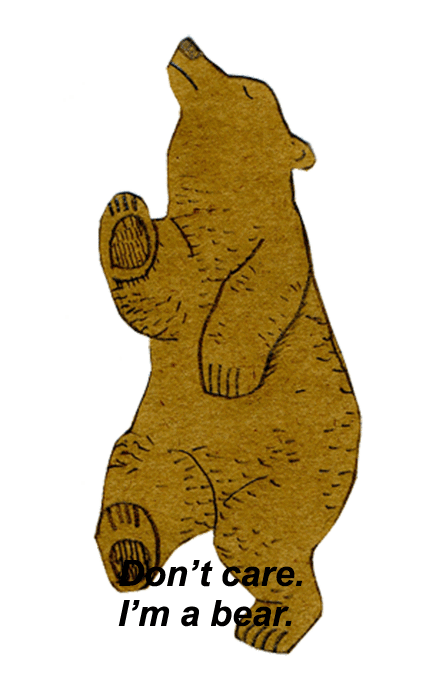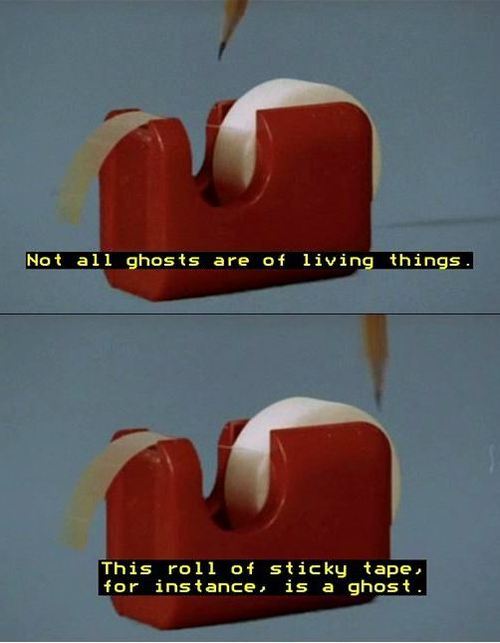Youaurendenial - Are You Supposed To Be Here?

More Posts from Youaurendenial and Others
A Space Odyssey: 21 Years of Searching for Another Earth
There are infinite worlds both like and unlike this world of ours. We must believe that in all worlds there are living creatures and plants and other things we see in this world. – Epicurus, c. 300 B.C.

Are we alone? Are there other planets like ours? Does life exist elsewhere in the universe?
These are questions mankind has been asking for years—since the time of Greek philosophers. But for years, those answers have been elusive, if not impossible to find.
The month of October marks the 21st anniversary of the discovery of the first planet orbiting another sun-like star (aka. an exoplanet), 51 Pegasi b or “Dimidium.” Its existence proved that there were other planets in the galaxy outside our solar system.*

Even more exciting is the fact that astronomers are in hot pursuit of the first discovery of an Earth-like exoplanet orbiting a star other than the sun. The discovery of the so-called “blue dot” could redefine our understanding of the universe and our place in it, especially if astronomers can also find signs that life exists on that planet’s surface.
Astronomy is entering a fascinating era where we’re beginning to answer tantalizing questions that people have pondered for thousands of years.

Are we alone?
In 1584, when the Catholic monk Giordano Bruno asserted that there were “countless suns and countless earths all rotating around their suns,” he was accused of heresy.

But even in Bruno’s time, the idea of a plurality of worlds wasn’t entirely new. As far back as ancient Greece, humankind has speculated that other solar systems might exist and that some would harbor other forms of life.
Still, centuries passed without convincing proof of planets around even the nearest stars.

Are there other planets like ours?
The first discovery of a planet orbiting a star similar to the sun came in 1995. The Swiss team of Michel Mayor and Didier Queloz of Geneva announced that they had found a rapidly orbiting gas world located blisteringly close to the star 51 Pegasi.

This announcement marked the beginning of a flood of discoveries. Exotic discoveries transformed science fiction into science fact:
a pink planet
worlds with two or even three suns
a gas giant as light as Styrofoam
a world in the shape of an egg
a lava planet

But what about another Earth?
Our first exoplanet mission**, Kepler, launched in 2009 and revolutionized how astronomers understand the universe and our place in it. Kepler was built to answer the question—how many habitable planets exist in our galaxy?

And it delivered: Thousands of planet discoveries poured in, providing statistical proof that one in five sun-like stars (yellow, main-sequence G type) harbor Earth-sized planets orbiting in their habitable zones– where it’s possible liquid water could exist on their surface.

Now, our other missions like the Hubble and Spitzer space telescopes point at promising planetary systems (TRAPPIST-1) to figure out whether they are suitable for life as we know it.

Does life exist elsewhere in the universe?
Now that exoplanet-hunting is a mainstream part of astronomy, the race is on to build instruments that can find more and more planets, especially worlds that could be like our own.

Our Transiting Exoplanet Survey Satellite (TESS), set for launch in 2017-2018, will look for super-Earth and Earth-sized planets around stars much closer to home. TESS will find new planets the same way Kepler does—via the transit method—but will cover 400 times the sky area.

The James Webb Space Telescope, to launch in 2018, wil be our most powerful space telescope to date. Webb will use its spectrograph to look at exoplanet atmospheres, searching for signs of life.

We still don’t know where or which planets are in the habitable zones of the nearest stars to Earth. Searching out our nearest potentially habitable neighbors will be the next chapter in this unfolding story.

*The first true discovery of extrasolar planets was actually a triplet of dead worlds orbiting the remains of an exploded star, called a pulsar star. Two of three were found by Dr. Alexander Wolszczan in 1992– a full three years before Dimidium’s discovery. But because they are so strange, and can’t support life as we know it, most scientists would reserve the “first” designation for a planet orbiting a normal star.
** The French CoRoT mission, launched in 2006, was the first dedicated exoplanet space mission. It has contributed dozens of confirmed exoplanets to the ranks and boasts a roster of some of the most well-studied planets outside our solar system.
To stay up-to-date on our latest exoplanet discoveries, visit: https://exoplanets.nasa.gov
Make sure to follow us on Tumblr for your regular dose of space: http://nasa.tumblr.com
Be inspired
Jfc that kitty parade music justmakes it hilarious
This vid gave me cancer
squirm
We waited two years, and god damn was it worth it. Thank you Vinny.
This Week @ NASA--April 14, 2017
Cassini and the Hubble Space Telescope, two of our long-running missions, are providing new details about the ocean-bearing moons of Jupiter and Saturn. Hubble’s monitoring of plume activity on Europa and Cassini’s long-term investigation of Enceladus are laying the groundwork for our Europa Clipper mission, slated for launch in the 2020s. Also, Shane Kimbrough returns home after 171 days aboard the Space Station, celebrating the first Space Shuttle mission and more!

Ocean Worlds
Our two long-running missions, Cassini and the Hubble Space Telescope, are providing new details about “ocean worlds,” specifically the moons of Jupiter and Saturn.

The details – discussed during our April 13 science briefing – included the announcement by the Cassini mission team that a key ingredient for life has been found in the ocean on Saturn’s moon Enceladus.

Meanwhile, in 2016 Hubble spotted a likely plume erupting from Jupiter’s moon Europa at the same location as one in 2014, reenforcing the notion of liquid water erupting from the moon.

These observations are laying the groundwork for our Europa Clipper mission, planned for launch in the 2020s.

Welcome Home, Shane!
Shane Kimbrough and his Russian colleagues returned home safely after spending 173 days in space during his mission to the International Space Station.

Meet the Next Crew to Launch to the Station
Meanwhile, astronaut Peggy Whitson assumed command of the orbital platform and she and her crew await the next occupants of the station, which is slated to launch April 20.

Student Launch Initiative
We’ve announced the preliminary winner of the 2017 Student Launch Initiative that took place near our Marshall Space Fight Center, The final selection will be announced in May. The students showcased advanced aerospace and engineering skills by launching their respective model rockets to an altitude of one mile, deploying an automated parachute and safely landing them for re-use.

Langley’s New Lab
On April 11, a ground-breaking ceremony took place at our Langley Research Center for the new Systems Measurement Laboratory. The 175,000 square-foot facility will be a world class lab for the research and development of new measurement concepts, technologies and systems that will enable the to meet its missions in space explorations, science and aeronautics.

Yuri’s Night
Space fans celebrated Yuri’s Night on April 12 at the Air and Space Museum and around the world. On April 12, 1961, cosmonaut Yuri Gagrin became the first person to orbit the Earth.

Celebrating the First Space Shuttle Launch
On April 12, 1981, John Young and Bob Crippin launched aboard Space Shuttle Columbia on STS-1 a two-day mission, the first of the Shuttle Program’s 30-year history.

Watch the full episode:
Make sure to follow us on Tumblr for your regular dose of space: http://nasa.tumblr.com
Hey look; an iPhone app.

You suck Brett.


-
 jacebranstein1 reblogged this · 5 months ago
jacebranstein1 reblogged this · 5 months ago -
 jacebranstein1 liked this · 5 months ago
jacebranstein1 liked this · 5 months ago -
 kimbus-the-whimbus reblogged this · 5 months ago
kimbus-the-whimbus reblogged this · 5 months ago -
 hassamkhalidsaidfuckyet reblogged this · 6 months ago
hassamkhalidsaidfuckyet reblogged this · 6 months ago -
 cozynites reblogged this · 6 months ago
cozynites reblogged this · 6 months ago -
 annoyingwhispersgiver liked this · 8 months ago
annoyingwhispersgiver liked this · 8 months ago -
 finndiseicla liked this · 9 months ago
finndiseicla liked this · 9 months ago -
 snazzycicada reblogged this · 9 months ago
snazzycicada reblogged this · 9 months ago -
 kannie47 liked this · 9 months ago
kannie47 liked this · 9 months ago -
 jenniebellie liked this · 11 months ago
jenniebellie liked this · 11 months ago -
 outlandishwhalesharks reblogged this · 11 months ago
outlandishwhalesharks reblogged this · 11 months ago -
 lunadove reblogged this · 1 year ago
lunadove reblogged this · 1 year ago -
 vexshawy liked this · 1 year ago
vexshawy liked this · 1 year ago -
 nitrochirals reblogged this · 1 year ago
nitrochirals reblogged this · 1 year ago -
 memed reblogged this · 1 year ago
memed reblogged this · 1 year ago -
 samhaine1 liked this · 1 year ago
samhaine1 liked this · 1 year ago -
 deactivated-posts reblogged this · 1 year ago
deactivated-posts reblogged this · 1 year ago -
 mbrosee reblogged this · 1 year ago
mbrosee reblogged this · 1 year ago -
 dapperbunns liked this · 1 year ago
dapperbunns liked this · 1 year ago -
 i-am-beathach liked this · 1 year ago
i-am-beathach liked this · 1 year ago -
 joao-50 liked this · 1 year ago
joao-50 liked this · 1 year ago -
 roleypoleyolee reblogged this · 1 year ago
roleypoleyolee reblogged this · 1 year ago -
 crimeswithemma liked this · 1 year ago
crimeswithemma liked this · 1 year ago -
 notabuddhist liked this · 1 year ago
notabuddhist liked this · 1 year ago -
 j-unos reblogged this · 1 year ago
j-unos reblogged this · 1 year ago -
 svartnebulosa liked this · 1 year ago
svartnebulosa liked this · 1 year ago -
 moody-room liked this · 1 year ago
moody-room liked this · 1 year ago -
 orchisfatalis reblogged this · 1 year ago
orchisfatalis reblogged this · 1 year ago -
 superbientotal reblogged this · 1 year ago
superbientotal reblogged this · 1 year ago -
 slightly-bewildered-fallen-angel liked this · 1 year ago
slightly-bewildered-fallen-angel liked this · 1 year ago -
 slightly-bewildered-fallen-angel reblogged this · 1 year ago
slightly-bewildered-fallen-angel reblogged this · 1 year ago -
 mothra55 reblogged this · 1 year ago
mothra55 reblogged this · 1 year ago -
 twin-cabins reblogged this · 1 year ago
twin-cabins reblogged this · 1 year ago -
 chocolatetrashbatbandit liked this · 1 year ago
chocolatetrashbatbandit liked this · 1 year ago -
 iwanttoforget reblogged this · 1 year ago
iwanttoforget reblogged this · 1 year ago -
 medical-exsanguination reblogged this · 1 year ago
medical-exsanguination reblogged this · 1 year ago -
 dermondistaufgegangen liked this · 1 year ago
dermondistaufgegangen liked this · 1 year ago -
 heatherannchristie liked this · 1 year ago
heatherannchristie liked this · 1 year ago -
 shard-of-a-lost-light-brigade reblogged this · 1 year ago
shard-of-a-lost-light-brigade reblogged this · 1 year ago -
 everydayesterday liked this · 1 year ago
everydayesterday liked this · 1 year ago -
 wirepaladin reblogged this · 1 year ago
wirepaladin reblogged this · 1 year ago -
 consultingcriminal-fallen-angel reblogged this · 1 year ago
consultingcriminal-fallen-angel reblogged this · 1 year ago -
 inkypainter15 liked this · 1 year ago
inkypainter15 liked this · 1 year ago
